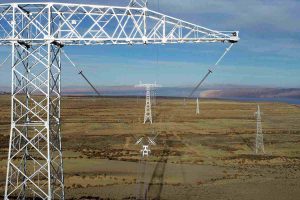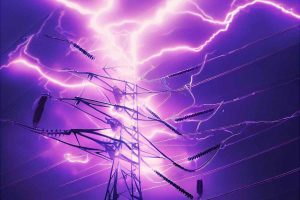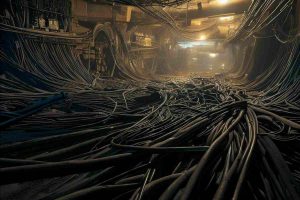High voltage cables are a type of cable used to transmit high voltages and large currents., normally used in the distribution and transmission of electrical energy, as well as in electrical substations. According to the standards of the International Electrotechnical Commission, High voltage cables are classified into three specifications: 110kV, 220kV y 500kV. Cables of 110kV and above are called ultra high voltage cables.
HV Cable

high voltage cables (HV cable, for its acronym in English) They are a crucial component of the electrical infrastructure that enables the transmission and distribution of electrical energy over long distances and in large quantities.. These high voltage cables they are designed to withstand extremely high voltages and must be able to carry large amounts of power safely and reliably.
On this page, you can find detailed technical information on the different types of high voltage cables, its specific characteristics and applications. News and advances in HV cable technology are also published., as new materials and manufacturing techniques that allow the construction of more efficient and higher capacity cables.
How to Calculate Cable Voltage Loss?
Voltage loss refers to the numerical voltage difference across the ends of impedance components in a circuit.. In engineering calculations, the voltage loss approximates the longitudinal component of the voltage drop.
Drones for Inspection of Power Lines: Autonomy and Precision
With the continued acceleration of the construction of new electrical systems, The use of drones for inspection of power lines has begun to take center stage in the market. Commercial drones seem to have found new application perspectives in this broad market.
High Voltage Cable Market is Expected to Reach 10.900 Millions in 2029
According to data from the SHANGPU Consulting Group, Global sales of the high voltage cables market reached 8,200 million dollars in 2022 and are expected to reach 10,900 millions of dollars for 2029, with a compound annual growth rate (CAGR) of 4.1% during the period 2023-2029.
The Energy Revolution: Ultra High Voltage Transmission
With the continued increase in global energy demand, Ultra high voltage transmission technology has emerged to provide more efficient solutions, safe and reliable for power transmission. Large-scale construction of ultra-high voltage projects has driven the rapid development of ultra-high voltage industry, playing a crucial role in global energy supply and energy transformation.
The High Voltage Underground Cable Market Will Exceed 48 billion in 2032
A recent research study conducted by Global Market Insights Inc. has revealed that the high-voltage underground cable market is on track to reach a valuation of more than 48 billion dollars for the year 2032. This exponential growth is attributed to the increasing demand for electricity, the adoption of renewable energy sources and the need for efficient transmission systems.
Does Radiation from High Voltage Cables Affect Human Health??
In the age of electricity, high voltage cables are an essential part of our modern infrastructure. These cables carry large amounts of electrical energy over long distances., feeding our houses, industries and cities. Nevertheless, there has been persistent concern about whether radiation from these high voltage cables can affect human health. To fully understand this topic, First we must distinguish between two types of radiation: the ionizing and the electromagnetic.
Laying of Underground High Voltage Cables
high voltage cables, that are a common presence in our daily life, They are often installed on electrical towers in the suburbs. Nevertheless, It is interesting to note that some of the cables continue to use high-voltage transmission even when they enter urban areas.. This has the benefit of effectively reducing energy losses.. Hoy, ZMS takes you deep into underground power cables.
Types and Characteristics of High Voltage Conductors
High-voltage conductors play a critical role in the efficient and safe transmission of electrical power over long distances.. These special cables are designed to withstand high voltages and carry large amounts of electricity., allowing energy to be brought from the generating plants to the places where it is needed.
Deciphering the Differences Between High and Low Voltage Cables
In the world of electric power transmission, cables play a crucial role in carrying electricity from its generation to the points of consumption. Nevertheless, not all cables are the same, and one of the fundamental aspects that distinguishes them is their ability to withstand different levels of tension. In this article, we will explore the differences between high and low voltage cables, analyzing its characteristics, applications and technical considerations.










